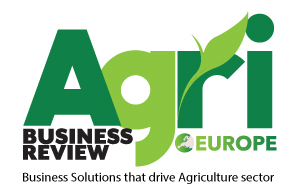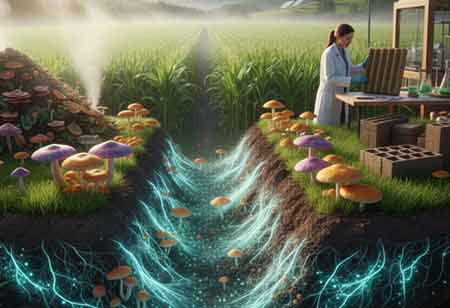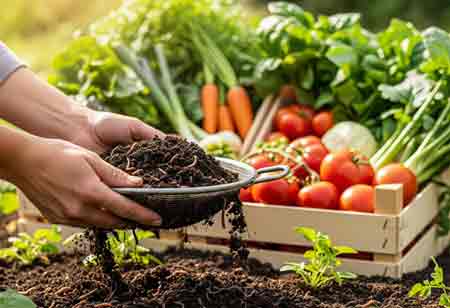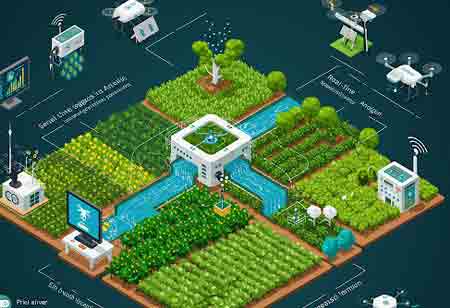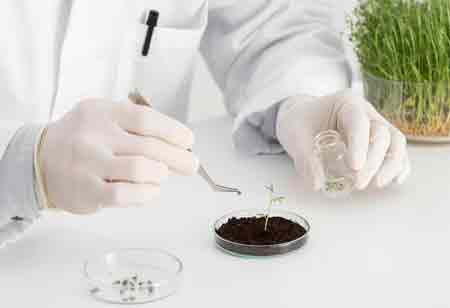Thank you for Subscribing to Agri Business Review Weekly Brief
The Rise of High-Tech Indoor Farming in Latin America
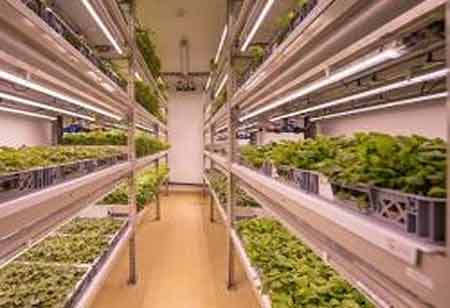
By
Agri Business Review | Friday, December 05, 2025
Stay ahead of the industry with exclusive feature stories on the top companies, expert insights and the latest news delivered straight to your inbox. Subscribe today.
Latin America, defined by its vast agricultural landscapes and rich biodiversity, is undergoing a transformative shift in its food production paradigm. High-tech indoor farming, encompassing advanced methodologies like vertical farming, hydroponics, and aeroponics within controlled environments, is not just a concept but a rapidly growing trend. This sophisticated approach to cultivation is emerging as a vital component in addressing the evolving demands for food security, sustainability, and urban food provision across the continent, urging us to adapt to these changes.
The Expansion of High-Tech Indoor Farming in Latin America
Foremost among them is the accelerating pace of urbanization. With a significant portion of the Latin American population migrating to urban centers, the demand for fresh, locally sourced produce continues upward. Traditional outdoor farming often struggles to meet this localized demand efficiently, leading to prolonged supply chains, increased transportation costs, and a higher carbon footprint. Indoor farms, by contrast, can be strategically located within or on the periphery of metropolitan areas, significantly reducing food miles and directly ensuring a consistent supply of nutritious produce to consumers. This geographical advantage aligns perfectly with the growing consumer preference for fresh, high-quality, and sustainably grown food.
Another powerful driver is the pressing need for enhanced food security and resilience. While robust, Latin America's agricultural sector is increasingly susceptible to the unpredictable impacts of climate variability. Extreme weather events, including droughts, floods, and shifting rainfall patterns, directly affect crop yields and can lead to significant economic losses for farmers. High-tech indoor farming mitigates these risks by creating climate-controlled environments where temperature, humidity, light, and nutrient levels are precisely regulated. This allows for year-round cultivation, independent of external climatic conditions, providing a stable and reliable food supply less vulnerable to environmental shocks. Such resilience is becoming paramount in a region acutely aware of its agricultural vulnerabilities.
Technological Advancements At The Heart of this Agricultural Revolution
The indoor farming sector in Latin America is witnessing a rapid integration of cutting-edge innovations that enhance efficiency, productivity, and sustainability. LED lighting, specifically optimized for plant growth, is a cornerstone technology that allows for precise light spectrum and intensity control, directly influencing plant development and yield. Automated systems, including robotic harvesting and climate control mechanisms, are becoming increasingly sophisticated, reducing labor costs and improving operational precision. Furthermore, the convergence of the Internet of Things (IoT) with data analytics and artificial intelligence (AI) transforms indoor farms into knowledgeable and adaptive systems. Sensors collect vast amounts of data on plant health, environmental conditions, and resource consumption, which AI algorithms then analyze to optimize growing conditions, predict potential issues like nutrient deficiencies or pest infestations, and inform data-driven decisions for maximizing yield and resource efficiency. These real-time monitoring and optimization capabilities are driving significant improvements in resource utilization, particularly water and energy.
Adopting water-efficient growing mechanisms is a defining characteristic of high-tech indoor farming in the region. Hydroponics, where plants are grown in nutrient-rich water solutions without soil, is widely implemented due to its remarkable water savings compared to traditional agriculture. Similarly, aeroponics, which involves suspending plant roots in the air and misting them with nutrient solutions, offers even greater water efficiency and accelerated growth rates. While aquaponics, which combines aquaculture with hydroponics, is also present, hydroponics and aeroponics are particularly prevalent in commercial operations due to their scalability and control. These water-saving technologies are especially relevant in parts of Latin America facing water scarcity or increasing pressure on freshwater resources.
Future Growth and Development of Crops in High-Tech Indoor Farms
The crops cultivated in Latin American high-tech indoor farms are predominantly high-value, fast-growing varieties. Leafy greens, such as various types of lettuce and spinach, are a primary focus due to their high demand in urban markets, relatively short growth cycles, and suitability for controlled environments. Herbs, including basil, cilantro, and mint, also feature prominently. Microgreens are another popular choice with their concentrated nutritional value and quick turnover. Beyond these, there is a growing interest in cultivating certain fruits like strawberries and vegetables such as tomatoes and cucumbers, particularly specialty varieties that command higher market prices and benefit from precise environmental control. The ability to produce these crops with consistent quality and year-round availability is a significant advantage for restaurants, supermarkets, and increasingly, direct-to-consumer models.
Investment in high-tech indoor farming across Latin America is on an upward trajectory, reflecting the growing confidence in its economic viability and long-term potential. Both regional and international capital are flowing into the sector, supporting the establishment of new facilities and expanding existing operations. This investment is aimed at scaling up production and fostering further research and development in optimizing growing protocols, developing more energy-efficient systems, and exploring new crop varieties suitable for indoor cultivation. For instance, the vertical farming market in Latin America is projected to experience substantial growth in the coming years, indicating a strong market outlook.
The high-tech indoor farming industry in Latin America is driven by the imperative for urban food security and climate resilience. Supported by a continuous stream of technological innovations, this sector is poised to play an increasingly crucial role in the region's agricultural future. Integrating advanced lighting, automation, data analytics, and water-efficient growing methods transforms traditional agrarian landscapes. This offers a sustainable and reliable pathway to feed a growing and urbanizing population while minimizing environmental impact.
